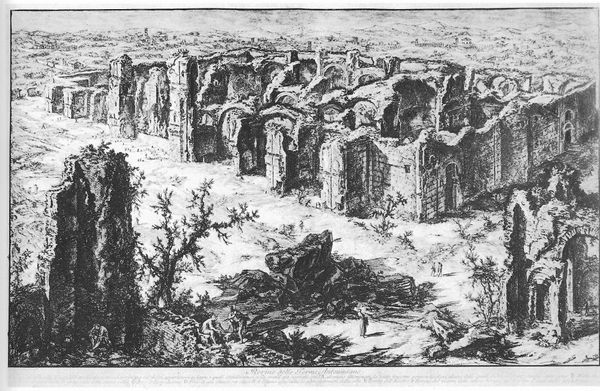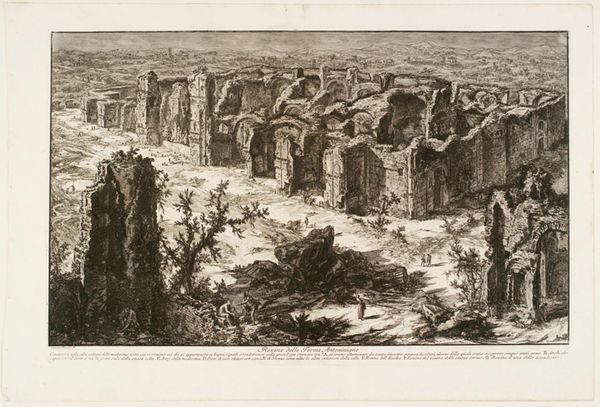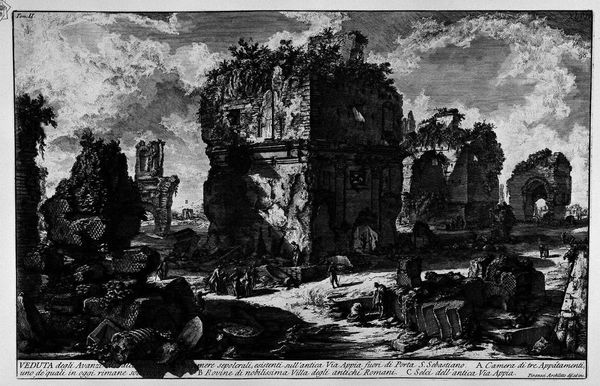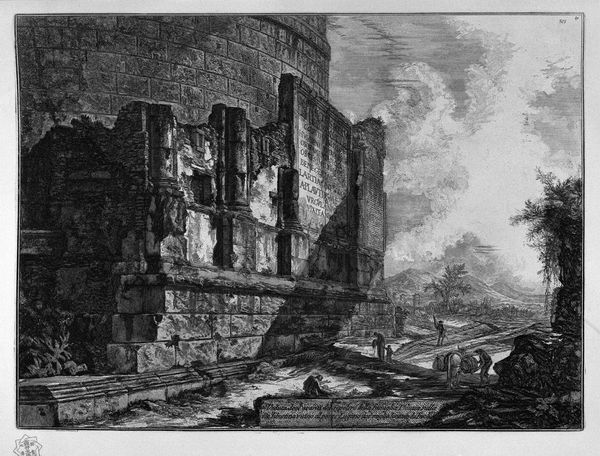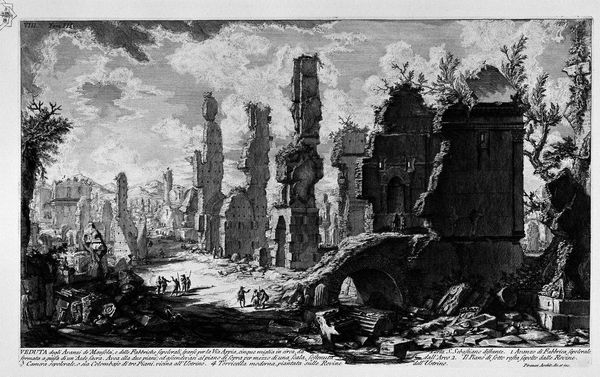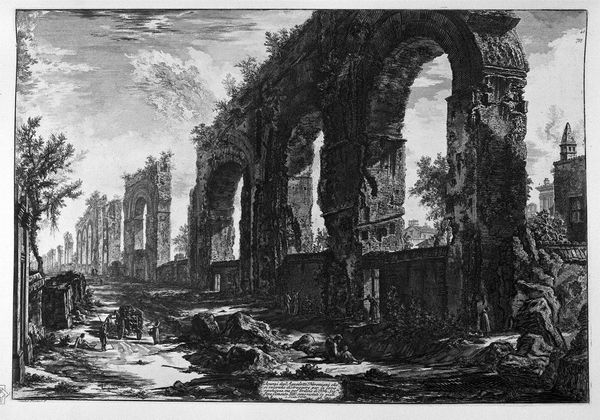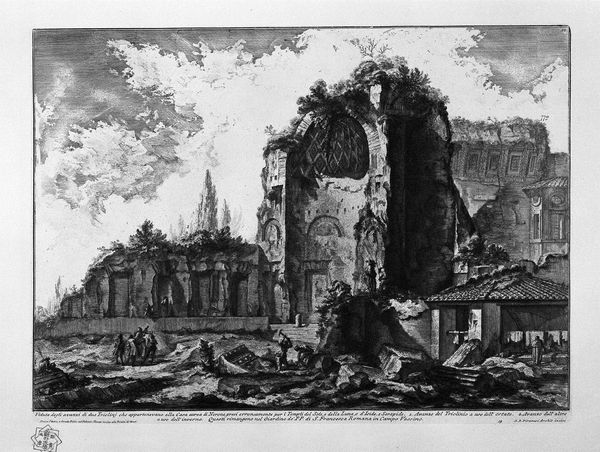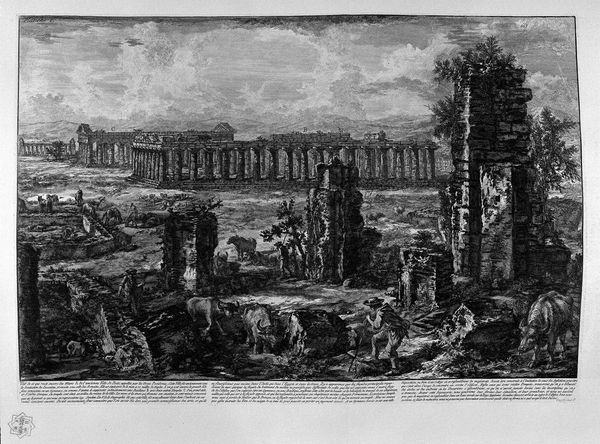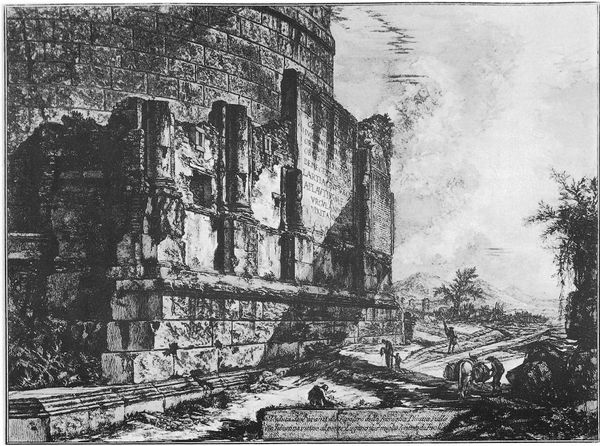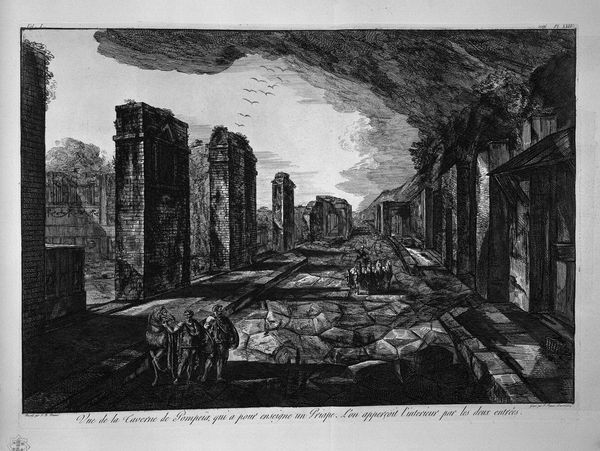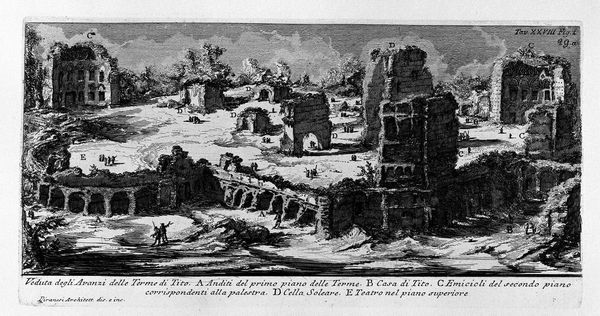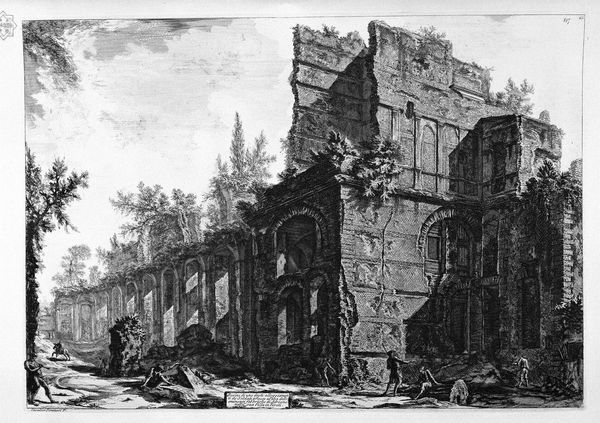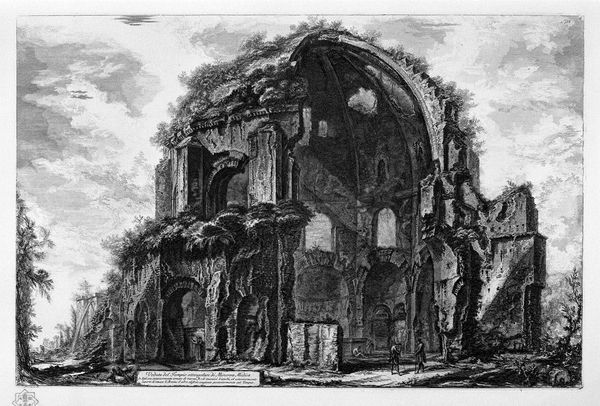
print, etching, engraving, architecture
#
neoclassicism
# print
#
etching
#
landscape
#
romanesque
#
history-painting
#
engraving
#
architecture
Copyright: Public domain
Curator: This etching before us, attributed to Giovanni Battista Piranesi, presents the "Ruins of the Antonine Baths." Note the complex layering, the textures rendered solely through line and tone. What's your immediate response to it? Editor: An almost overwhelming sense of melancholic grandeur. I feel the weight of history, a somber reflection on the ephemerality of power and the inevitable decay of even the most imposing structures. Curator: Precisely. Piranesi excels at depicting not just architecture, but also the sensation of immense scale. See how the relatively tiny figures are dwarfed by the colossal remains, emphasizing the sheer size of the original baths and their current state of ruin. The composition draws the eye upward, accentuating the verticality of the crumbling walls. Editor: And isn't it interesting how those very human figures also remind us of who these spaces were designed for? I am drawn to considering the daily lives enacted within those walls. The social stratification encoded within such leisure spaces. Curator: Certainly. Though primarily appreciated for its neoclassical elements, this piece also subtly engages with the picturesque aesthetic, inviting viewers to contemplate both beauty and decay. Note the interplay of light and shadow that defines the architectural elements, and the contrast with the organic lines of the encroaching landscape. Editor: This piece speaks to a tension in neoclassical art: its simultaneous romanticizing and erasure of certain histories. We’re confronted with a narrative about empires but what of those who built, maintained, and were excluded from such places? This image serves as an archive and an erasure. Curator: An intriguing consideration. The brilliance in Piranesi lies in his manipulation of perspective and contrast. It's in his ability to evoke the sublime. The technical mastery, how he balances clarity with evocative obscurity, merits close consideration. Editor: Agreed. Perhaps through our dialogues, we can acknowledge both that sublime artistry, and that it cannot be divorced from the sociopolitical frameworks that influenced, enabled, and are often obfuscated by it. Curator: Indeed, a testament to the complexity that infuses even seemingly straightforward representational works. Editor: Yes, a place to reflect, not just on structural artistry, but on humanity.
Comments
No comments
Be the first to comment and join the conversation on the ultimate creative platform.
